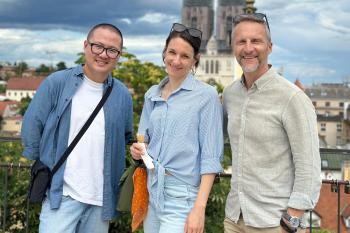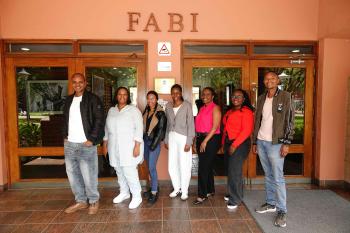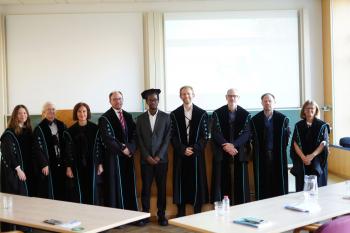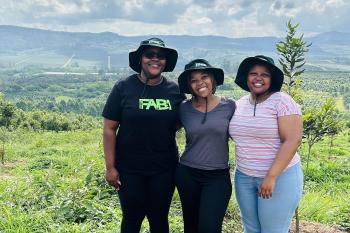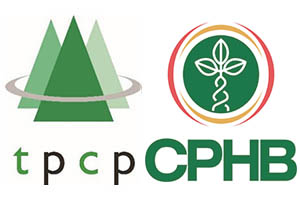Wood and bark borers comprise some of the most serious pests of forestry trees worldwide. These insects use the inside of bark and / or the wood to feed on and to make a home. Damage by these insects includes under bark girdling, extensive tunneling which weakens the tree, and / or the introduction of symbiotic fungi that weaken or kill the host. Although some wood boring beetles (such as Apate indistincta and Sinoxylon bellicosum) have been reported as minor pests of A. mearnsii, the current major wood and bark boring pests infest Eucalyptus and Pinus.
Wood borers of eucalypts
The cossid moth (Coryphodema tristis) is a major pest of Eucalyptus. This insect is reported to be native to South Africa with a wide range of native and introduced host plants, including grape vines (Vitis vinifera), quince (Cydonia oblonga) and bushwillows (Combretum sp.). It was first recorded infesting Eucalyptus in 2004. Strangely, despite its broad host range, the cossid moth has only been reported to infest E. nitens. No other Eucalyptus species has been infested, even when planted adjacent to highly infested E. nitens stands. The adult female cossid moth lays her eggs under the branches or in bark cracks. Emerging larvae first feed under the bark, but later instars bore into the sapwood. This insect is gregarious (feeds in groups) and causes extensive tunneling. Characteristic symptoms include large amounts of frass protruding from holes in the trunk, sawdust at the base of the trunk and a blackening of the trunk. The moths are also known as goat moths because of the unpleasant smell associated with their infestations. Trees often survive infestation by more than one generation of the cossid moth. But, in time trees weakened by the extensive tunneling are likely to be blown over by the wind. The tunneling also affects the quality and volume of the wood. The cossid moth has been reported to infest trees four years and older (Gebeyehu et al. 2004).
The Eucalyptus longhorn beetles (Phorocantha recurva and P. semipunctata) were accidentally introduced from Australia, and first recorded in South Africa in 1906. The adult female lays eggs under loose bark and the emerging larvae feed on the cambium and phloem layers. Fully grown larvae bore directly into the heartwood where they later pupate. The tunneling of the larvae can cause under bark girdling and reduce the value of the timber. However, these beetles are currently not considered major pests as they primarily infest dying trees.
Wood borers of pine
The Sirex woodwasp (Sirex noctilio) is one of the most serious pests of Pinus in South Africa (Hurley et al. 2008). This insect is native to Eurasia, but has been accidentally introduced to various southern hemisphere countries, and more recently to North America. In South Africa, the Sirex woodwasp was first detected in 1994 in Cape Town. It has since spread to the majority of pine growing areas in the country. The Sirex woodwasp has a symbiotic association with a fungus (Amylostereum areolatum). The adult female wasp places this fungus, together with its eggs and a toxic mucous, into the wood of pine trees. The fungus and mucous together overcome the defense of the tree and block the tracheids and thus nutrient transport. Attack by this insect usually results in tree death. Trees that survive the attack are usually attacked again the next year and killed. Importantly, the Sirex woodwasp primarily attacks stressed trees. Consequently, the most severe damage of this insect has been reported in areas where trees are stressed by factors such as drought and high stocking. The larvae tunnel in the wood, feeding on the fungus. Pupation occurs in the wood. The adult wasps do not feed and only live for one to two weeks.
The ambrosia beetles (Xyleborus and Xyleborinus spp.) also bore into the wood of Pinus. Unlike the Sirex woodwasp, these beetles are considered a minor pest. Infestations are often associated with cut or burnt trees. The beetles have a symbiotic association with fungi. The tunnels of these beetles and the staining of the wood from the fungi can make infested trees unsuitable for use as saw timber. Both the larvae and adults feed on the fungi.
Bark borers of pine
There are three species of bark beetles that are recorded to infest Pinus in South Africa. All three of these species have been accidentally introduced from the northern hemisphere. Bark beetles are considered as some of the most serious pest threats to forestry worldwide, but fortunately the three species currently in South Africa are only minor pests.
The Mediterranean pine engraver beetle (Orthotomicus erosus) feeds on the inner bark, generally on the main trunk. It attacks dead and dying trees, and can accelerate the death of dying trees by under bark girdling. It is also know to be associated with the fungus Ophiostoma ips that causes bluestain of the wood, thus decreasing its value as saw timber. The adults are dark brown and about 3 mm long. The pine bark beetle (Hylastes angustatus) feeds on the roots and stumps of dying trees. It is generally considered a secondary pest, although it has been known to kill seedlings by feeding on their roots and root-collars, thereby causing under bark girdling. In such cases, the pine bark beetle can become a serious pest. The adults are dark brown and about 4 mm long. The red-haired bark beetle (Hylurgus ligniperda) infests stumps or the base of weakened trees. The adults are dark brown and about 6 mm long (Tribe 1992).
Another bark borer on Pinus is the deodar weevil (Pissodes nemorensis). This insect breeds in dead or dying trees, but also infests the leaders of young healthy trees. The adult beetle lays its eggs under the bark and the larvae feed on the inner bark. When feeding occurs on the leaders of young trees, the leader is often killed from under bark girdling. This results in double leaders and malformation of the tree. It has been observed that such double leaders are more susceptible to infestation by the Sirex woodwasp. Pupation occurs in a chip-cocoon under the bark. Emerging adults are about 7 mm long with two creamy-white spots on their elytra (hind wings) (Gebeyehu and Wingfield 2003).


